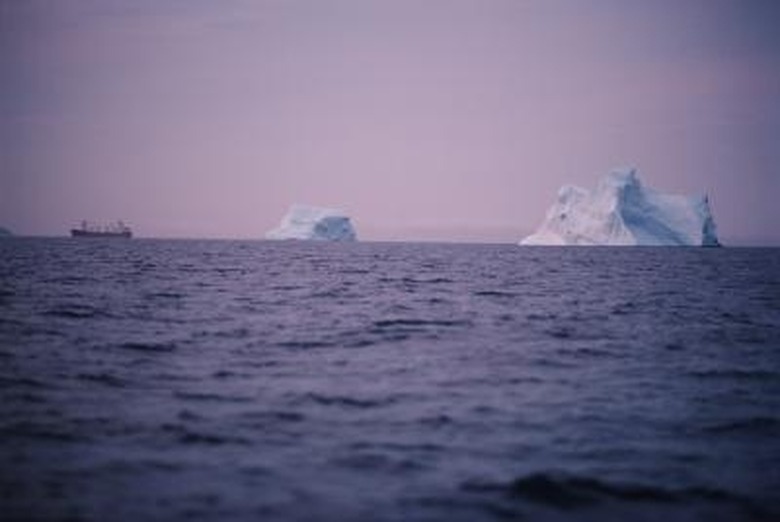How Does Salinity Impact Oceans Currents?
According to the National Oceanic and Atmospheric Administration, as much as 71 percent—nearly three-quarters—of all the earth's surface is covered by the oceans, which hold 97 percent of the earth's water. These mammoth bodies of water are not inanimate; currents move the water from place to place. These currents are affected to a large degree by the salinity (concentration of salt and other dissolved minerals) of the water.
Density
Density
One principle of physics is that material that is less dense will rise, while material that is more dense will sink. This principle applies to water. Water that is more dense will sink to the ocean floor. As this happens, less dense water has to move out of the way. The less dense water rises. This process creates a circular pattern known as a convection current.
Temperature
Temperature
Temperature really is a measure of energy. The greater the energy, the higher the temperature. When temperatures are high, the atoms in matter become "excited" from the energy and start to expand. Molecules, which are made up of atoms, also expand in this way. This expansion results in lowered density. In the ocean, warmer water expands just like any other matter, and following the principle of density, it rises to the top of the ocean. The cooler water, which is more dense than the warm water, sinks to the bottom and takes up the space left by the rising warm water. The result is a convection current.
Salinity, Density, and Temperature
Salinity, Density, and Temperature
When the water molecules of the ocean become heated, they expand. Extra space is created by this expansion into which salt and other molecules (e.g., calcium) can fit. Since warmer water thus can hold more salt and other molecules than cold water; it can have a higher salinity. To relate this to ocean currents, the higher the salinity of ocean water, the more dense it becomes. When the salinity is high enough, the water will sink, starting a convection current. This means that cold water can sit on top of warm water if the warm water has a high enough salinity, and that the natural flow of a current actually can be reversed based on the related density, salinity and temperature of the ocean water.
Sources of Salt and Other Minerals
Sources of Salt and Other Minerals
The salt and other minerals that are in ocean water and which affect ocean currents come from several places. Some of it is eroded from the land and carried into the ocean through rivers and streams. It also comes from the surface of the ocean floor. Still more can be put into the ocean by people.
Fun Facts
Fun Facts
-The saltiest ocean (not sea) in the world is the Atlantic Ocean. Not surprisingly, this ocean is the most stratified (has the most layers) of all the oceans.
-When ice forms in polar regions, the remaining water has a higher salinity, so it sinks and starts a current.
-Because of the connection among temperature, salinity and density, some currents actually reverse direction seasonally. An example of where this occurs is the Indian Ocean.
-Salinity is lowered in polar regions where it is warm enough for ice to melt, and where precipitation and runoff are high. As examples, the Baltic Sea, Black Sea, and waters of Puget Sound all have a salinity of 27/1000 or less. This is much less than the average salinity of the ocean, which is 35/1000.
-Currents affect the weather on earth because they transport heat and moisture. The salinity of the ocean thus is directly related to weather even on land because salinity is tied to the movement of the currents.
Cite This Article
MLA
Thibodeaux, Wanda. "How Does Salinity Impact Oceans Currents?" sciencing.com, https://www.sciencing.com/salinity-impact-oceans-currents-5517246/. 24 April 2017.
APA
Thibodeaux, Wanda. (2017, April 24). How Does Salinity Impact Oceans Currents?. sciencing.com. Retrieved from https://www.sciencing.com/salinity-impact-oceans-currents-5517246/
Chicago
Thibodeaux, Wanda. How Does Salinity Impact Oceans Currents? last modified March 24, 2022. https://www.sciencing.com/salinity-impact-oceans-currents-5517246/
